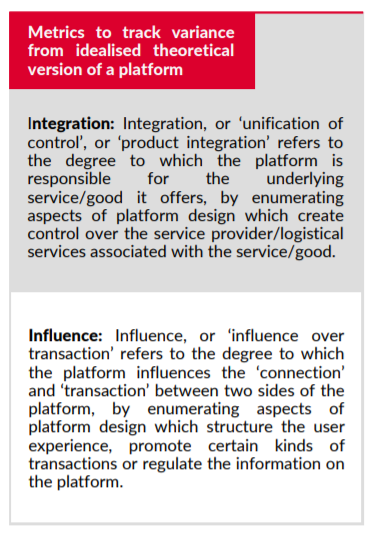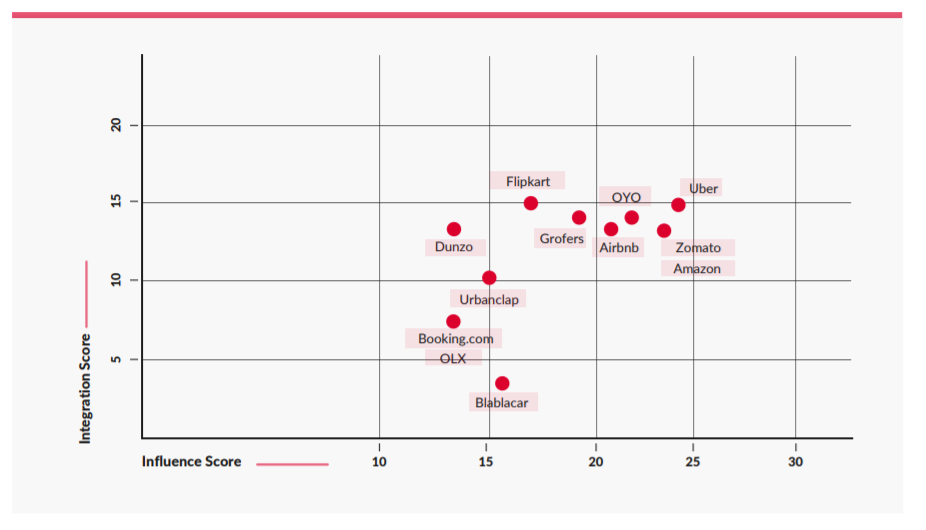
An Integrated Framework for the Study of Digital Platforms
Attuning regulation to the complexities of digital platforms
Summary: This report builds a tool which can help create sophisticated legal rules about platform responsibility by developing a systematic approach for identifying, arranging, and visualising judicial observations about digital platforms.
Introduction
Digital platforms have come to occupy an increasingly significant role in modern markets. Several of the largest companies in the world are structured as digital platforms – who provide coordination services between buyers and sellers of goods and services. Consequently, several disciplines, such as economics, information sciences, legal theory, and product development, have attempted to study the role of digital platforms. However, insights generated in these academic disciplines have not been able to effectively influence the development of the law.
Legal and regulatory action appears unable to comprehend the complexity of digital platforms. Digital platforms claim to occupy a minimal role in the coordination of services, and consequently, seek to minimise their legal responsibility in relation to many issues, such as consumer protection and labour laws. At the same time, they can use technological controls and contractual requirements to retain significant control and influence over the transactions that are concluded using their platform. The law has been unable to recognise this nuance and ascribe responsibility effectively on digital platforms.
To aid the development of a sophisticated legal framework which can recognise the complexity and nuance of modern digital platforms, Vidhi has published a report titled ‘An Integrated Framework for the Study of Digital Platforms’. This report builds a practical tool to intermediate legal rules and platform design, thereby creating a method through which regulation can be attuned to the specific complexities of digital platforms.
Research focus
Building a grounds-up understanding of digital platforms

Integrating approaches from various disciplines, we identify that the common concern across disciplines is an idealised, elementary vision of platforms as a ‘stage’ – which merely connects individuals without having any role in the underlying service, or any influence over the transaction. In this report, we attempt to identify criteria which can help explain the difference of modern digital platforms from this elementary conceptualisation.
Systematising legal insights about digital platforms
We organise judicial observations about the role of digital platforms along the above-mentioned criteria – for example, whether the platform exercises supervision over the service, determines the incentive structure for participants, requires exclusivity arrangements, determines the price of goods – and other similar aspects which reflect an evolution in platform design and sophistication. To do this, we examine one hundred and fifty cases where Courts have attempted to understand digital platforms and ascribe responsibility to them based on the specific ways in which they exercise control or influence over a transaction. We systematise these insights along the above-mentioned criteria to develop a basic framework for the classification of digital platforms.
Mapping the complexity of digital platforms
We survey the contractual terms and platform interfaces of some leading e-commerce platforms to operationalise this model. The result creates an interface which can recognise the nuanced differences between these platforms. This interface can be used to help the law adapt to platform design and create sophisticated rules for legal responsibility, as opposed to creating monolithic legal rules which do not recognise the complex differences between modern digital platforms.

Recommendations
A practical tool to intermediate legal rules and platform design
The report operationalises the legal interface mentioned above by examining some leading e-commerce platforms (link for Annexure 2). The graph below demonstrates the degree to which these e-commerce platforms differ from the elementary conceptualisation of a ‘platform’. This exercise reveals the complex and varied nature of e-commerce platforms and highlights the need for legal rules to be cognisant of this complexity. This tool also offers the potential for designing legal rules in a manner that is fully attuned to the realities of platform design, thereby overcoming a significant regulatory hurdle in existing legal systems.

Expanding the integrated framework to include other criteria
The methodology used to develop the above-mentioned graph is capable of further iteration and integration. By recognising other aspects in which digital platforms differ from the elementary conceptualisation of a “platform”, and recording judicial observations related to such aspects, a dynamic legal vocabulary can be established which can continuously track the evolution of judicial understanding of digital platforms, as well as offer a potent tool to classify digital platforms and develop an operational taxonomy of such platforms.






